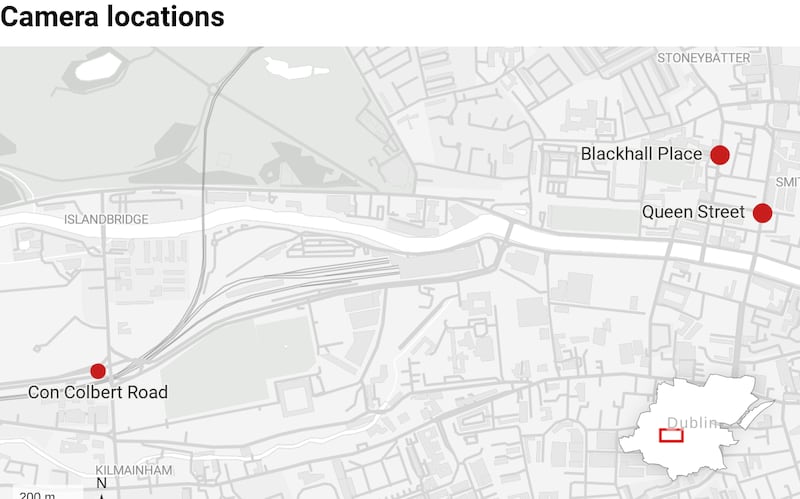Cameras to catch motorists breaking red lights are to be installed at three notorious blackspots in Dublin more than two years after a trial detected 1,300 drivers ignoring the signals at one city centre junction.
The roll-out has prompted calls for a much wider extension of the technology across the city amid estimates “hundreds of thousands” of potentially life-endangering red light running offences are going unpunished in the capital every year.
In a joint project involving the National Transport Authority (NTA), the Garda and Dublin City Council, a pilot camera was set up where the Luas red line crosses Blackhall Place – a blackspot for cars and trams colliding – in June 2015.
Over an 18-month period, there were 1,300 road users detected breaking the lights.
More than 700 prosecutions were brought. Several hundred were not pursued because they were unidentifiable cyclists, the camera images were obscured or the vehicle registration was not visible.
Breaking red lights incurs three penalty points and a fine of up to €120 on payment of the fixed charge.
The NTA said it had been reviewing the findings since then.

The Garda, as traffic legislation enforcers, were asked to consider a report of the review and have written to the NTA in recent weeks to confirm the Blackhall Place camera will be run permanently to detect red light running.
It has also recommended two additional camera installations be set up at separate blackspots – one on Con Colbert Road and another on Queen Street.
A spokesman for the NTA said it “will now seek to advance these arrangements in collaboration with Dublin City Council and with An Garda Síochána”.
It could not confirm a date for their installation.
Wider roll-out
Ciarán Cuffe, Green Party transport spokesman and chairman of Dublin City Council’s transport committee, called for the review to be made public and a wider roll-out of red light running cameras.
“When you look at the 1,300 detections at Blackhall Place, the numbers are high; it could run into hundreds of thousands of offences every year across the city,” he said.
“It is very frequent, it is a real problem, particularly for pedestrians who are very vulnerable. I see it almost every day, walking, cycling and driving through the city. I think we have to up our game in this regard. I think we have to improve compliance. These [cameras] can dramatically improve road safety.”
Mr Cuffe said he knew other areas, such as Phibsborough, where residents wanted to see the technology installed over concerns about the scale of traffic light breaches.
Studies in the UK had previously shown they worked in making drivers comply with the law, he added.
Speaking two years ago, Garda chief superintendent Aidan Reid, one of the country's most senior officers in charge of road safety, said "when you consider there are 1,620 sets of traffic lights in Dublin, even one breach each day [at each traffic lights] equals 1,620 potential collisions".







